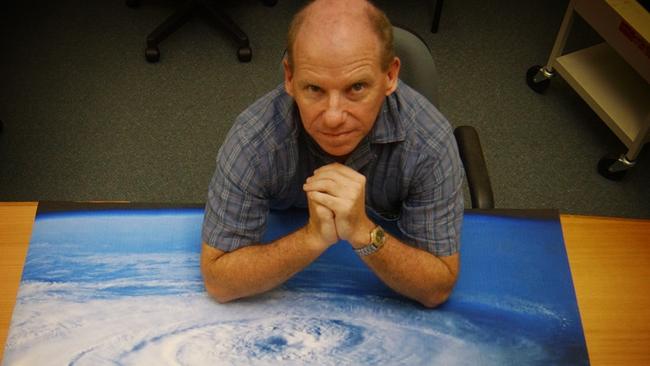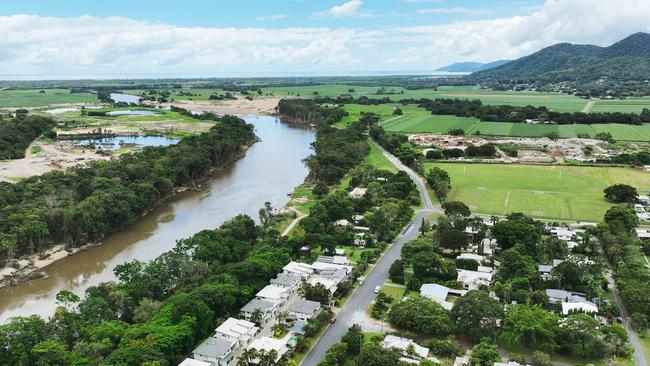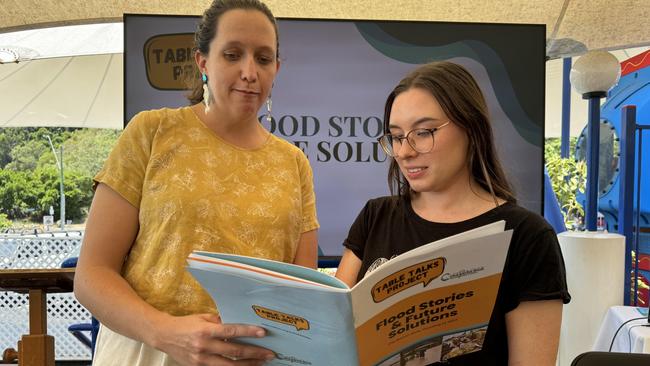Far North December 2023 floods highlight need for weather modelling with climate change data
A Far North academic says weather modelling does not factor in climate change, which is why more “unprecedented” events are occurring and “100-year” events will become bigger.

Cairns
Don't miss out on the headlines from Cairns. Followed categories will be added to My News.
A leading academic is building a case to undertake a weather modelling study which would take into account future changes to the climate, as he predicts an increase in the frequency of severe events.
The work would be used to make residential developments safer and less prone to severe weather events.
As it stands, weather predictions are based on statistical and historic data, not accounting for changes to climate temperatures, James Cook University Adjunct Professor of Geoscience Jonathan Nott says.
Following the devastation of the “unprecedented” December 2023 floods in the Far North, many residents, disaster workers and academics have questioned weather monitoring instruments and the accuracy of flood maps.
Speaking at CAFNEC’s Table Talk report launch at Yorkeys’s Knob on Saturday, Professor Nott said ongoing variations to climate, were leading to changes in the frequency of “one-in-100-year events” which would impact flood plains and therefore residential developments.

He used a local example of the Barron River and said in the last century, the mouth had moved slightly north, away from Cairns airport and towards Machans Beach, and a smaller creek had formed off the channel in the 1930s – Thomatis Creek.
A research paper published in 1980 predicted that Thomatis Creek would eventually become the main mouth of the Barron River in a natural process known as river channel migration.
Professor Nott said since the early 1900s global temperatures were about 1.3C above the index temperature – the average temperature between two periods of time, and this needed to be considered in weather modelling.
“We currently use a statistical approach, which makes assumptions on our climate based on past events,” he said.

“And we assume that relationship holds true with time. What we know, is that climate change is saying that doesn’t happen. The size of the 100 year event is getting bigger, and we don’t model for that.”
Professor Nott said tropics around the world would be feeling the effects of as the magnitude and frequency of 100-year events changed and explained a one degree celsius increase in temperatures led to a seven per cent increase in atmospheric water vapour.
“The situation is only going to get worse, so we need to mitigate against the hazard. We need to adapt the hazard,” he said.

“But when we have people who build on flood plains, they’re told they can build there, flood comes, then we have a disaster and then our insurance premiums increase, among other consequences.
“One way we can adapt or mitigate is to stop allowing development in hazard-prone areas.”
And to do that, Professor Nott said a “deterministic” study, estimated to cost $150,000, needed to be undertaken to develop flood maps which showed changes over 10, 20 and 50 years.
DISASTER LESSONS REPORT TO ASSIST ADVOCACY
The Cairns and Far North Environment Centre unveiled a report which notes stories, solutions and recommendations following the December 2023 floods, at a community forum on the weekend.
The Table Talks Project Flood Stories and Future Solutions report interviewed 45 participants which included northern beaches residents and disaster response stakeholders.
The report considered issues with weather alerts, preparedness and plans, emergency responses, and the flow-on impacts of accessing housing, grants, and insurance.

The report also supported JCU Adjunct Professor of Geoscience Jonathan Nott’s calls for weather modelling and maps which factor in changes to climate.
CAFNEC community campaigner Bronwyn Opie said among the multiple recommendations, key suggestions included alternative alert systems which didn’t rely on digital technology that failed in the weather, and could include identifying local on-ground community members to deliver warnings.
“We heard about the importance of community-led recovery, so one of our recommendations is to empower and resource those community leaders,” Ms Opie said.
“That could be providing training for the leaders, printing be-ready disaster guides or organising community catch ups to make sure everyone is prepared.”
More Coverage
Originally published as Far North December 2023 floods highlight need for weather modelling with climate change data




